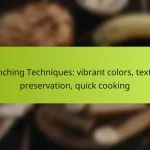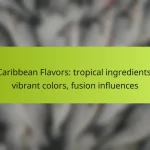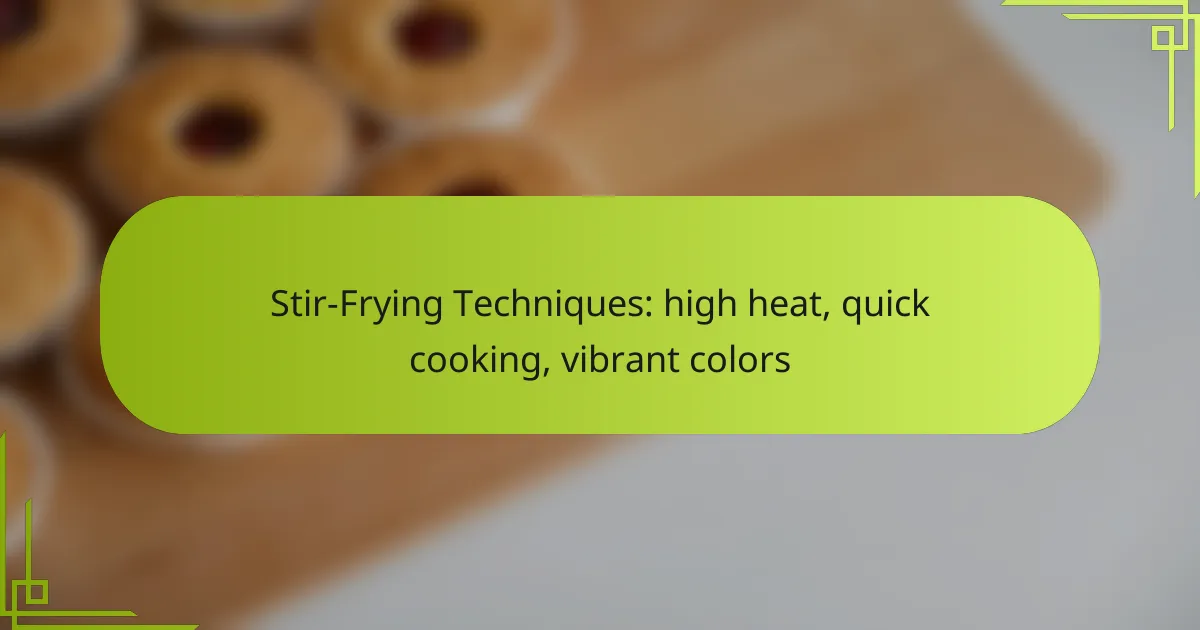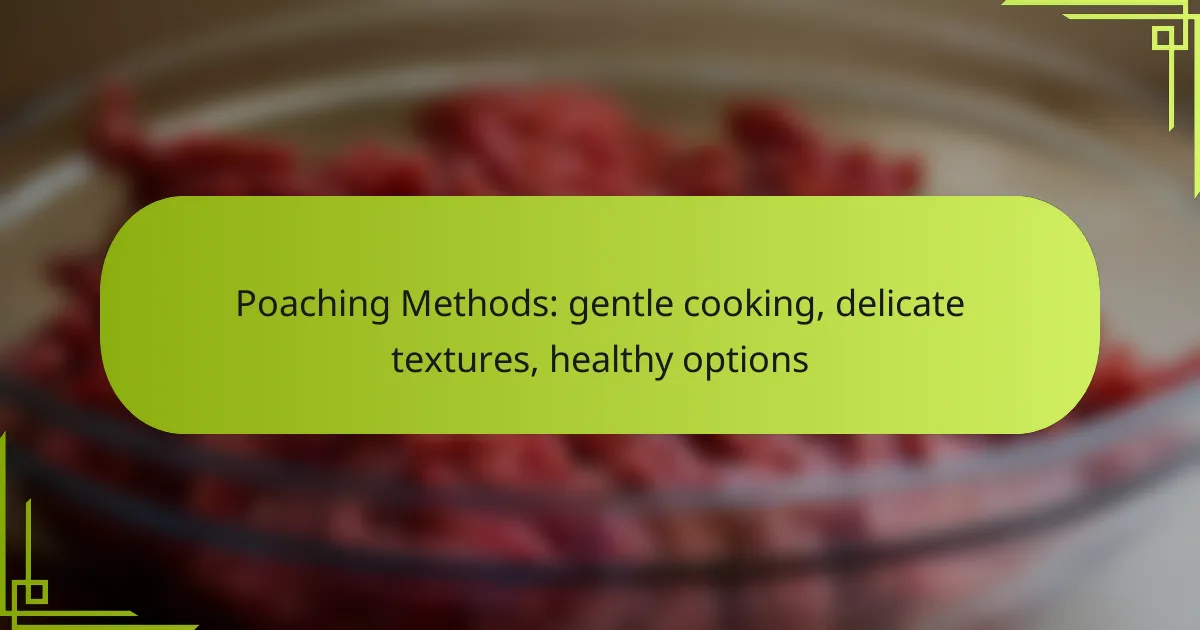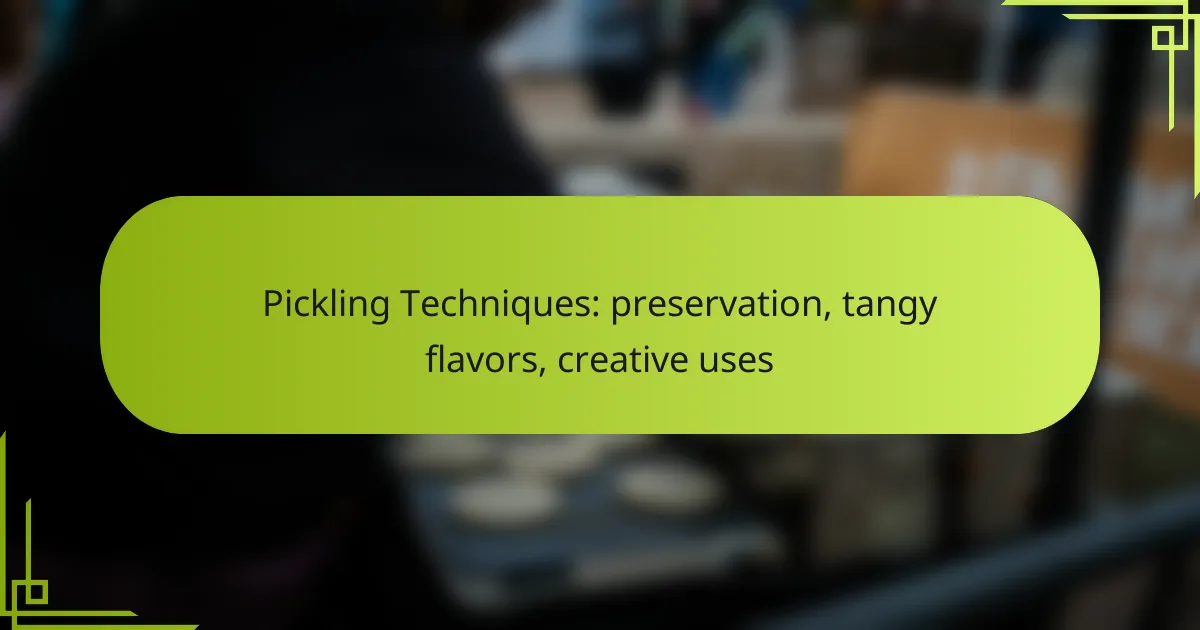Exploring various smoking methods unlocks deep flavors and enhances the culinary experience, as each technique infuses food with unique characteristics. These methods not only preserve food by inhibiting spoilage but also create visually stunning presentations that elevate dishes and drinks. From smoked cocktails to flavorful cheese boards, the art of smoking adds depth and intrigue to any meal.

What are the best smoking methods for deep flavors?
The best smoking methods for achieving deep flavors involve various techniques that enhance the taste of food through the infusion of smoke. Each method offers unique characteristics and requires different equipment and materials, allowing for a range of flavor profiles and presentations.
Wood smoking
Wood smoking is a traditional method that uses different types of wood to impart distinct flavors to food. Common woods include hickory, mesquite, apple, and cherry, each contributing its unique taste. When using wood chips or chunks, soak them in water for about 30 minutes before adding them to the fire to create a longer-lasting smoke.
Consider the type of food you are smoking; for example, hickory works well with pork, while fruit woods complement poultry and fish. Monitor the temperature closely, ideally keeping it between 225°F and 250°F (about 107°C to 121°C) for optimal results.
Charcoal smoking
Charcoal smoking utilizes charcoal briquettes or lump charcoal as the primary heat source, providing a steady and controllable temperature. This method is popular for its ability to produce a clean-burning smoke that enhances the flavor of meats. Using a charcoal smoker or grill with a water pan can help maintain moisture in the food while smoking.
For added flavor, consider mixing wood chips with the charcoal. Aim for a smoking temperature around 225°F to 275°F (about 107°C to 135°C) for best results. Avoid using lighter fluid, as it can impart unwanted flavors to the food.
Pellet smoking
Pellet smoking involves using compressed wood pellets that are fed into a smoker automatically, providing consistent heat and smoke. This method is user-friendly and allows for precise temperature control, making it suitable for beginners and experienced cooks alike. Pellet smokers can produce a variety of flavors depending on the type of pellets used.
Common pellet flavors include mesquite, apple, and pecan. Set the smoker to a temperature range of 180°F to 400°F (about 82°C to 204°C) depending on the food being smoked. Regularly check the pellet supply to ensure uninterrupted smoking.
Cold smoking
Cold smoking is a technique that infuses smoke flavor into food without cooking it, typically done at temperatures below 90°F (about 32°C). This method is ideal for items like cheese, fish, and cured meats, allowing them to absorb smoke flavor while retaining their original texture and moisture.
To cold smoke, use a dedicated cold smoker or create a separate smoke chamber. Ensure proper ventilation to avoid overheating. Cold smoking can take several hours to days, depending on the desired intensity of flavor.
Hot smoking
Hot smoking cooks food while infusing it with smoke flavor, typically at temperatures ranging from 200°F to 300°F (about 93°C to 149°C). This method is suitable for meats, poultry, and fish, resulting in tender, flavorful dishes. Hot smoking can be done using various equipment, including smokers, grills, or even stovetop setups.
For best results, season the food beforehand and monitor the internal temperature to ensure it reaches safe cooking levels. Hot smoking usually takes a few hours, depending on the thickness of the food and the desired smokiness.

How do smoking methods preserve food?
Smoking methods preserve food by infusing it with flavors while also creating an environment that inhibits the growth of spoilage microorganisms. The combination of heat, smoke, and sometimes salt helps to extend the shelf life of various foods, making them more enjoyable and safe to consume.
Salt curing
Salt curing is a traditional preservation method that involves coating food, often meats or fish, in salt to draw out moisture. This process creates a hostile environment for bacteria, effectively prolonging the food’s shelf life. Common examples include prosciutto and salted cod.
When using salt curing, it’s essential to use the right amount of salt, typically around 2-3% of the food’s weight, to ensure effective preservation. Additionally, proper storage in a cool, dry place can enhance the results.
Dry smoking
Dry smoking involves exposing food to smoke from burning wood without adding moisture, which helps to create a unique flavor profile while preserving the food. This method is commonly used for meats like brisket and salmon, where the smoke penetrates the surface, adding depth to the taste.
For optimal results, maintain a consistent temperature between 200°F and 250°F (93°C to 121°C) during the smoking process. It’s crucial to monitor the internal temperature of the food to ensure it reaches safe levels, typically around 145°F (63°C) for fish and 165°F (74°C) for poultry.
Liquid smoke application
Liquid smoke is a concentrated flavoring derived from the condensation of smoke, allowing for a smoky taste without the need for traditional smoking methods. This product can be easily added to marinades, sauces, or directly to food, making it a convenient option for home cooks.
When using liquid smoke, a little goes a long way; typically, just a few drops or teaspoons are sufficient to impart a strong flavor. Be cautious not to overuse it, as it can easily overpower the dish. Additionally, check the ingredient list for additives to ensure a pure product.
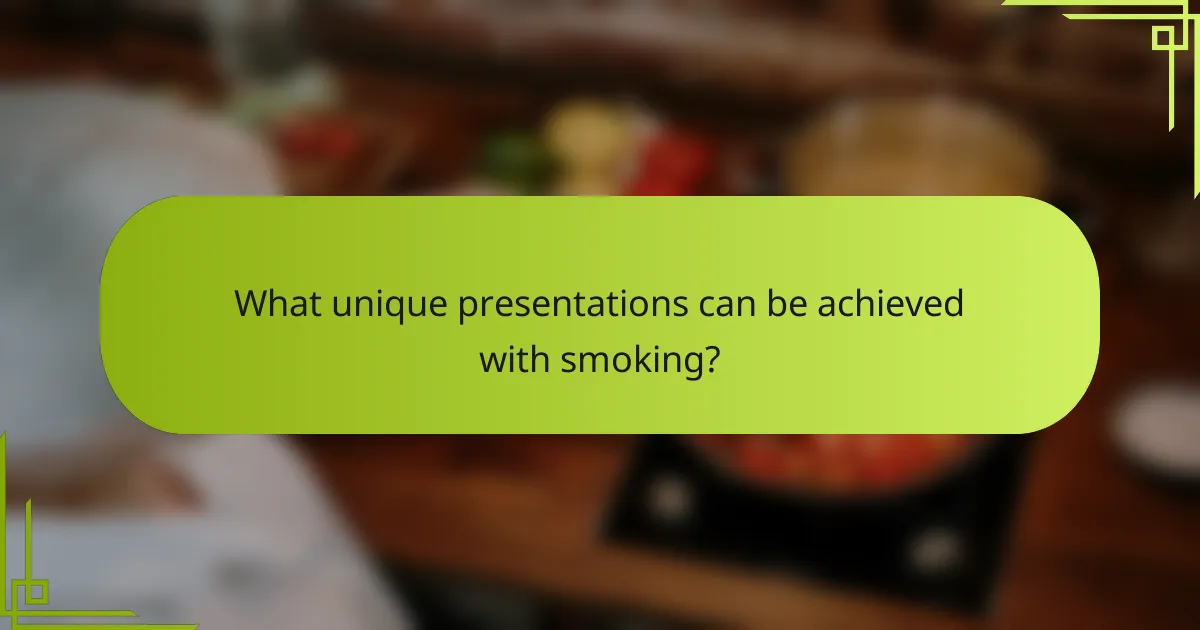
What unique presentations can be achieved with smoking?
Smoking can create visually striking and flavorful presentations that elevate food and drink experiences. Techniques such as infusing smoke into cocktails, enhancing cheese boards, and crafting desserts can impress guests and add depth to flavors.
Smoked cocktails
Smoked cocktails combine traditional mixology with the rich flavors of smoke, creating a unique drinking experience. To achieve this, bartenders often use a smoking gun or wood chips to infuse drinks with smoke just before serving.
Common choices for smoked cocktails include whiskey-based drinks, which pair well with oak or cherry wood, and tequila cocktails that benefit from mesquite. Experimenting with different woods can yield a variety of flavor profiles, so consider offering a selection to guests.
Smoked cheese boards
Smoked cheese boards offer a delightful twist on the classic cheese platter by incorporating smoked cheeses and accompaniments. Popular smoked cheeses include gouda, cheddar, and mozzarella, which can be paired with smoked meats, nuts, and fruits.
When assembling a smoked cheese board, aim for a balance of flavors and textures. Include a variety of cheeses, some fresh fruits like apples or pears, and a selection of crackers or bread. This presentation not only looks appealing but also invites guests to explore different flavor combinations.
Smoked desserts
Smoked desserts introduce an unexpected depth of flavor to sweet dishes, enhancing ingredients like chocolate, caramel, and fruit. Techniques can include smoking the ingredients directly or using smoke-infused syrups to drizzle over the final product.
Popular options for smoked desserts include chocolate mousse with a hint of hickory or smoked vanilla ice cream. When creating these desserts, ensure that the smoke flavor complements rather than overwhelms the sweetness, allowing for a harmonious balance.

What are the criteria for choosing a smoking method?
Choosing a smoking method involves evaluating factors such as flavor profile, food type, and equipment availability. Each criterion plays a crucial role in determining the best approach for achieving desired taste and presentation.
Flavor profile
The flavor profile is essential when selecting a smoking method, as different techniques impart varying tastes to the food. For instance, cold smoking retains the original flavor while adding subtle smokiness, whereas hot smoking infuses a more robust flavor due to the cooking process. Consider the wood type used, as options like hickory, mesquite, or applewood can significantly alter the final taste.
When aiming for deep flavors, methods such as wood chip smoking or using a smoker box can enhance the richness of meats and vegetables. Experimenting with different combinations can lead to unique flavor experiences.
Food type
The type of food being smoked is a critical factor in choosing a smoking method. Meats like brisket or ribs often benefit from hot smoking, which cooks and flavors simultaneously. In contrast, delicate items like fish or cheese may require cold smoking to avoid cooking them while still gaining that smoky essence.
Vegetables can also be smoked, and methods like using a stovetop smoker or a grill with wood chips can work well. Always consider the moisture content of the food, as drier items may absorb smoke differently than those with higher moisture levels.
Equipment availability
Equipment availability can greatly influence the smoking method you choose. If you have a dedicated smoker, you can explore various techniques like offset smoking or pellet smoking. However, if you only have a grill, you can still achieve great results by using indirect heat and wood chips.
For those with limited resources, stovetop smoking kits or even DIY methods using a pot and a lid can be effective. Assess what you have on hand and adapt your smoking approach accordingly to maximize flavor without needing extensive equipment.

How do smoking methods differ regionally in the UK?
Smoking methods in the UK vary significantly by region, influenced by local traditions, available resources, and culinary preferences. Each area has developed unique techniques and flavor profiles that reflect its cultural heritage.
Traditional British smoking
Traditional British smoking often involves cold smoking techniques, which preserve the food while imparting a subtle flavor. Commonly smoked foods include fish, meats, and cheeses, with methods passed down through generations. The process typically takes several hours to days, allowing for deep flavor absorption without cooking the food.
In the UK, smoked salmon is a classic example of this method, where the fish is cured and then cold smoked to achieve a delicate taste. Other popular items include kippers and smoked haddock, showcasing the diversity of British smoked cuisine.
Regional wood types
The choice of wood for smoking varies across the UK, each imparting distinct flavors to the food. Common woods include oak, hickory, and fruitwoods like apple and cherry, with each region favoring specific types based on availability and tradition.
For instance, in Scotland, oak is often used for smoking salmon, providing a robust flavor, while apple wood is popular in the West Country for its mild, sweet notes. Understanding the characteristics of different woods can enhance the smoking process and result in unique flavor profiles tailored to regional tastes.

What are the emerging trends in smoking methods?
Emerging trends in smoking methods focus on enhancing flavor profiles, preserving ingredients, and creating unique presentations. Techniques such as cold smoking, the use of diverse wood types, and innovative equipment are gaining popularity among culinary enthusiasts and professionals alike.
Deep flavors
Deep flavors in smoking methods are achieved by utilizing various types of wood, herbs, and spices. Different woods, such as hickory, mesquite, or fruitwoods like apple and cherry, impart distinct tastes that can enhance the overall profile of the smoked item. Experimenting with combinations can lead to unique flavor experiences.
When smoking, consider the duration and temperature, as these factors significantly affect flavor extraction. For instance, cold smoking typically lasts several hours and is ideal for delicate ingredients, while hot smoking can be completed in a shorter time frame, providing a more robust flavor.
Preservation
Preservation through smoking is a traditional method that extends the shelf life of various foods. The process works by creating a barrier against bacteria and mold, thanks to the chemicals released during smoking. This method is particularly effective for meats and fish, allowing them to be stored for longer periods without refrigeration.
To maximize preservation, ensure that the food is properly cured before smoking. Techniques such as brining or dry curing can enhance the preservation effects, allowing for a more flavorful and longer-lasting product.
Unique presentations
Unique presentations in smoking methods involve creative techniques that elevate the visual appeal of dishes. Using smoking guns or tabletop smokers allows chefs to infuse smoke directly at the table, creating an engaging dining experience. This method not only enhances flavor but also adds a theatrical element to the meal.
Consider using smoke-infused garnishes or serving smoked items in visually striking ways, such as in glass domes that release smoke when lifted. These presentations can captivate diners and create memorable moments, making the meal more than just a culinary experience.



